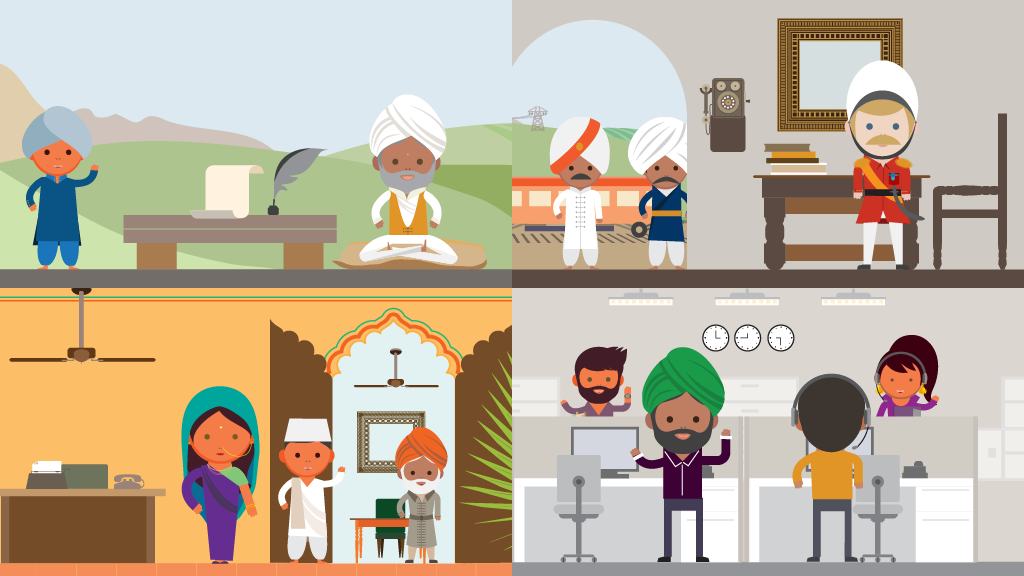How has the workplace in India evolved in its 25 years as an economically liberalized nation?
The Evolution of Workplace in India
What We Did
The Context
There is a growing realization that a maturing, global Indian workforce needs a workplace that speaks to their ethos and mores. The challenge remains for designers to discover what this “Indianness” is and reflect it sensitively, appropriately, and creatively. A lack of focused, comprehensive information that specifically addresses socio-cultural and economic factors in India is a key challenge to achieving a more culturally appropriate approach to workplace design.
The Results
The challenge in India is for both architects and corporations to recognize its rich cultural history, vast landscape, and how its evolution of work impacts the modern workforce. To understand how to improve workplace design in India, business owners, architects, and designers need to be informed by a deep understanding of workplace evolution, through time, as well as the forces that affected that evolution.
What This Means
To begin developing a conception of and design strategy for the Indian workplace, we identified 10 key factors to address as we look to the future:
Hierarchy: Indian culture remains hierarchical and the workplace must respect this separation. Management expects a level of distinction (separate elevators, for example) and a higher quality of service and design.
Religion: Sensitive accommodation of religious and cultural differences is paramount. Prayer rooms accommodating a variety of faiths should be accommodated in the workplace.
Demographics: Unlike many nations in the West, India’s demographics skew young: 60 percent are under 35, and by 2020 the average Indian will be only 29 years old.
Gender: Currently only 15 percent of the urban workforce is women. Though women are the minority, cultural needs require significant attention to separation between genders such as modesty panels at workstations, mother’s rooms, and security for women in the workplace.
Food: A large portion of the Indian population is vegetarian, and separation of vegetarian and non-vegetarian food is extremely important. Significant importance is placed on meals, which often consist of multiple items, and dedicated (non-toilet) hand-washing statements are necessary.
Work Styles: The Indian workforce has adopted technology quickly and is highly dependent on telephone and virtual communication, particularly as teams become more global. Growing focus on employee retention necessitates investment in learning and training activities.
Hospitality: Food service is extremely important for both internal and external meetings. Infrastructure must be provided for food preparation, and accommodations for added staff focused on food service and cleanup.
Location: Lack of available real estate has driven many offices to be located far from infrastructure, requiring independent power, water, and often sewage systems. Continued urbanization will require new approaches.
Sustainability: Corporate attention to sustainability is increasing. Larger floor plates create issues for daylight penetration, and heavy (often round-the-clock) space utilization requires extra attention to durability and housekeeping.
Transportation: Infrastructure and location challenges make for very long commutes. Arrival and departure amenities are required to enhance employee experience; many companies have dedicated bus fleets.
What’s Next?
Learn More
Team
Smita Gupta, Arpita Ray, Disha Chanchani, Sonmoy Chatterjee, Maanasa Ganesh, Rajendra Prasad Malineni, Abhishek Srinath, Sailaja Vedula
Year Completed
2016
Comments or ideas for further questions we should investigate?
